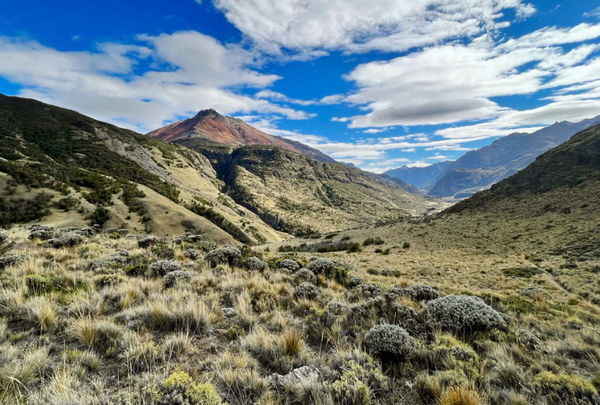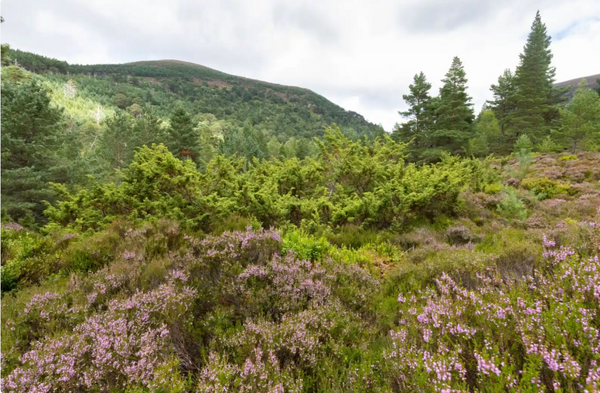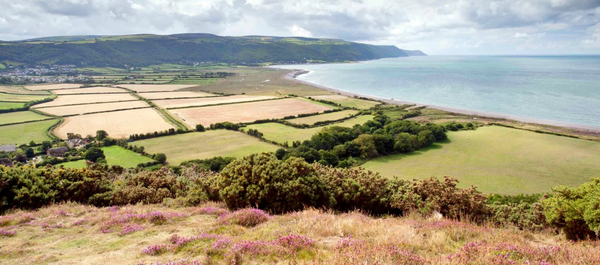Design & Nature Reimagined: Nature belongs everywhere, Part 2
Previously we talked about what rewilding is and how it looks in different landscapes. This week I want to talk about the benefit and impact of rewilding.
Rewilding has a lot of potential benefits. When done correctly, it can increase biodiversity, mitigate climate change, reduce climate change impacts, provide socio-economic opportunities to local communities, improve the health and well being of local communities, and reduce the cost and effect of environmental hazards.
So what does "good" rewilding look like?
Increased biodiversity and a healthy ecosystem
In Patagonia National Park they've focused on improving the ecosystem through rewilding. They've removed invasive sheep and cattle, reintroduced endemic condors and rheas, and have been working on natural reforestation.
By removing ranch fencing, the original corridors that the guanacos use was restored. By having more guanacos in the area, pumas also started showing up to hunt. And all this open space attracted huemel (Andean deer) which are shown to be necessary for a thriving ecosystem in that area. Three changes: removing invasive species, adding endemic species, and removing manmade barriers has set in motion a healthier system.

The Aviles Trail in Patagonia National Park | Photo by Chloe Berge | Afar
In Abernathy National Park, although this isn't technically considered a rewilding project, conservationists are creating a more hospitable environment for local flora and fauna by artificially aging trees, tipping some trees over, thinning the canopy, and generally making a mess.
These forests were previously a timber plantation. They were planted and made very orderly, which is great when you're trying to grow and harvest timber, but not good for promoting biodiversity and a strong ecosystem.
By making these changes, they allow other trees and plants to start growing. Plants that couldn't survive in a dense, heavily shadowed forest. By making a mess and having downed trees or trees with the tops cut off, they get in new wildlife that use those trees as homes, like the capercaillie, a ground-nesting bird that looks like a comical cross between a turkey and a peacock (really, look it up).

Heather grows in a clearing in a Caledonian pine forest | Photo by Mark Hamblin | The Guardian
Mitigate climate impacts
In 2020, scientists published an article in Nature supporting the idea that "If a third of the planet’s most degraded areas were restored, and protection was thrown around areas still in good condition, that would store carbon equating to half of all human caused greenhouse gas emissions since the industrial revolution."
The changes would prevent about 70% of predicted species extinctions, according to the research. There is so much to be gained by rewilding.
And as the impacts of climate change become more prevalent, we'll see increases in the severity of climate related disasters such as fires, hurricanes, and floods. But research is beginning to show that rewilding does mitigate some climate risk, like reducing flood risk by re-creating a natural flood mitigation ecosystem.
A good example of this was in Holnicote Estate where they're planting more trees in a way that will spread the water out over a larger area. The trees and diverted water will create a wider wetland, which will in turn attract more species and improve biodiversity.

View of Bossington and Porlock | © National Trust Images/Ross Hoddinott | National Trust
Improve communities and connecting people with nature
In Patagonia, locals in the area were employed to help with conservation efforts, which helps give an emotional connection to the work, and improve the local economy by providing jobs.
As the rewilding project grows there, there will be some touring allowed where tourists will pay to visit (funding conservation efforts), and will also benefit by learning about the park or even participating in monitoring or other rewilding or conservation efforts.
Humans are part of nature, and exposure to nature has proven benefits of boosting our mood, improving our attention, and lower stress. So with increased rewilding efforts, both in urban and rural settings, I hope we'll find increased well-being and happiness, as we spend more time outside.
